Excluded for centuries to the frequentation of citizens and people the summer retreat of the Roman Pontiffs, set as a gem on the shore of Lake Albano, knows from today a new and welcoming role of choral invitation as a gaudy seat with its furnished historical rooms and with the celebrated complex of its famous gardens, but particularly as a shining wing devoted to the most intense fruition of absolute masterpieces of the Vatican Museums. Actually, the Papal Villa with its related dependencies, by virtue of its belonging to the Church State, had experienced during World War II the reception of thousands of refugees and entire families escaping Nazi reprisals. About 12,000 people were able to find protection and food thanks to the intense activity promoted by Pius XII, and - a touching detail - 40 children were able to come to light on the pope’s own bed: that bed that can still be seen there today, not without emotion, in the cozy room on the main floor. Unfortunately, the Anglo-American allies, in spite of all diplomatically assured guarantees, mistook certain bombing raids directed at German positions, and there were several hundred casualties within the Vatican’s extraterritorial zone. This washing of heroism and blood is rightly remembered with a documentary and photographic exhibition in the first rooms on the first floor that visitors can walk through to become aware of a life that was not only formal within the solemn Palace whose facade dominates the high square of Castel Gandolfo.
After Paul VI died there (1978), the seat on the Alban Hills had many appearances by John Paul II, and then experienced the retirement from papal office of Benedict XVI (at 8 p.m. on Feb. 28, 2013). A decade of silence and stasis followed. This gives us the impetus to space briefly over that territory-paradise that are the Castelli Romani: which extend south of Rome and are geologically formed by a very vast volcanic area that - resting - left very fertile highlands and undulations, very rich in spring waters. Two lakes remained from as many ancient craters: the one at Nemi where Caracalla had the vaunted amusement ships laid, and the larger one at Albano on whose shores the emperor Domitian had his superb villa built. This lake easily overflowed, and in Roman times an admirable conduit was built to regulate the waters, which today offers an acrobatic archaeological tour. But it is the entire landscape that enchants, dotted with the small settlements of the producers of the famous wine and ringed by the historic villas of the great centuries that are often fascinating anthologies of architecture, sculpture, and patterned gardens.
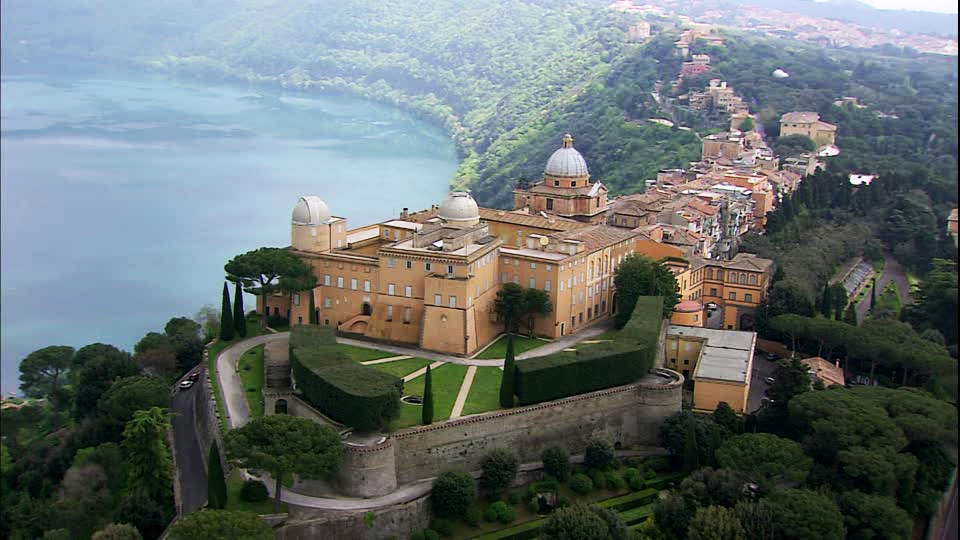


This glimpse of the poetic landscape where so many painters paused allows us to return to the “aedes pontificum,” which today seeks its own future by calling forth animated throngs of visitors. In fact, at the behest of Pope Francis (who never goes on vacation) the papal residence, while preserving some particular articulations such as the Vatican Specola, is now transformed into a living museum, articulated between architecture and nature, and takes on the rare but extraordinarily effective task of presenting and deepening - from season to season - some of the works of art from the countless art collections of the Petrine See. In fact, the visit of the museum itinerary within the Leonine walls, in Rome, sinks the daily guest into an ocean of elements that make the perception of even the most famous titles blurred and takes away the deep participation, the understanding necessarily linked to the era, to the historical and spiritual context, to the method of execution, to the very soul of the artist-author. And sometimes even the scholar fails to decrypt, to fully pick up the many aspects.
On the other hand, at Castel Gandolfo (whose name is linked to a Ligurian family that held the feudal mandate in its time) a very special offer will take place from now on: that of a direct, personal, enveloping encounter with very few works of the highest quality, brought here in their best condition and accompanied each one by an ad hoc environment, brightly lit and lavishly rich in critical, informative, explanatory accompaniment, such as to make their every value vibrate. Here - almost paraphrasing the sought-after sigh of the restless Doctor Faust of Goethean memory - every eager soul of art will be able to exclaim at the time of the pause the"stop, you are beautiful," as an authentic depth of meditation and satisfying nourishment of the substance of a cogent message. A long time therefore.
In the current summer 2024 this experience can be experienced on two works, both chosen by supreme masters of the Italian Renaissance: Antonio Allegri known as Correggio, and Raphael Sanzio of Urbino. The credit goes first and foremost to Dr. Barbara Jatta, director in capite of the Vatican Museums, who thus accomplishes a truly avant-garde test in the relationship with the public, a decisive and new role of select exhibitions at Castel Gandolfo. In this, particular credit was due - also from the Vatican Museums - to Andrea Carignani, head of the Exhibitions Office; Matteo Mucciante of the Conservator’s Office, who took care of the lighting; and Barbara Bellano of the Superintendence of Architectural Heritage. In the present summer phase, the study contributions of Dr. Fabrizio Biferali and Dr. Alessandra Rodolfo in their respective specializations follow in evidence.
As a note for the record we will say that Correggio (Antonio Allegri; Correggio, 1489 - 1534) was born and died in his small town, capital of a fief of the Empire, but worked especially in Parma with his famous frescoes in domes, gaudy altarpieces, and enchanting love myths; while Raphael Sanzio (Urbino, 1483 - Rome, 1520) pursued his well-known career first in Florence, and then constantly in Rome. The two artists met in the summer of 1513, when Allegri went down to Rome with Gregorio Cortese to collect the “Sistine Madonna,” and they almost certainly discussed pictorial preparations. On the same occasion Michelangiolo showed Correggio his “Moses,” who - exiled from the no longer foreseeable tomb of Julius II - stood covered and disdainful in the sculptural cavern of Macel de’ Corvi. Antonio reproduced him in his “Madonna di San Francesco” (1514-1515).


This was the summit canvas of an overall apparatus that closed the apse of the sodal church of Santa Maria della Misericordia in Correggio; seen there at the bottom was the “lifelike” statuary composition of the Madonna and Child-whose extremely valuable bust is still at the Museo Civico di Correggio, a polychrome terracotta work by Desiderio da Settignano - flanked by the two Allegrian canvases of St. John the Baptist, a young penitent in the woods, and St. Bartholomew in the act of offering Jesus the skin that will be taken from him in martyrdom. Gianluca Nicolini, an architect, designed the monumental reconstruction.
Correggio’s canvases were studied at the time by the writer, Nicolini and Margherita Fontanesi, with important contributions from Rodolfo Papa and Vatican restorers: to all went the open praise of Antonio Paolucci and David Ekserdjian. In this exhibition the canvas is proposed by Fabrizio Biferali’s excellent exegesis. Here is the Redeemer in glory appearing for us most illuminated, as beatifying a vision as we can ever see in a picture gallery, and he is exposed in direct view with his unusual, cogent, very singular iconography: he is naked to the chest, sitting on the iris and holding his feet on the clouds while divine light expands behind Him; He, powerfully covering the whole dimension of the square canvas, opens His arms unfolding His protective and welcoming hands with a gaze that we can define as universal. We have to think about where the painting was: inside a Confraternity of Mercy, assisting the sick the poor, widows, and raising children abandoned by families, accomplishing a sum of works of charity that cannot fail to move us! The painting stood high and this led the painter to some obvious and final adjustments that help the view from below. Returning to Jesus as the protagonist, with His nakedness and gesture, we could call Him The Redeemer in mercy, ready to welcome and repay. In Paradise He is surrounded by those children whom He loved so much and whom we, on the pictorial level, can admire endlessly, in their marvelous expressions and in their dissolving within the celestial radiance: a masterpiece achieved by an “unparalleled master” as Guercino called him, and on whose canvas we can find the astonishing chromatic preparations that only Raphael - in the history of painting - could equate.
And it is on the chromatic preparations that the most exhilarating discovery of critical reading took place, with an extremely topical ability that really takes us inside the pictorial process, step by step, of a Correggio who aims at the final result and the last pigments through a gradation of successive colored veils, faithful and mixed, which make the visible matter so tender and strong, always penetrable to light, always effusive and speaking, until the result that the epigraph above, taken from Vasari, declares “di stupendissima maraviglia.” Thus, thanks to the lesson of Claudio Rossi de Gasperis, firmly documented on site as well, we too can experience the angelic emotion of being together with the “flying children - in the limbs of the saints - wandering splendors - to the choirs of children, of loves,” set to music by Arrigo Boito.
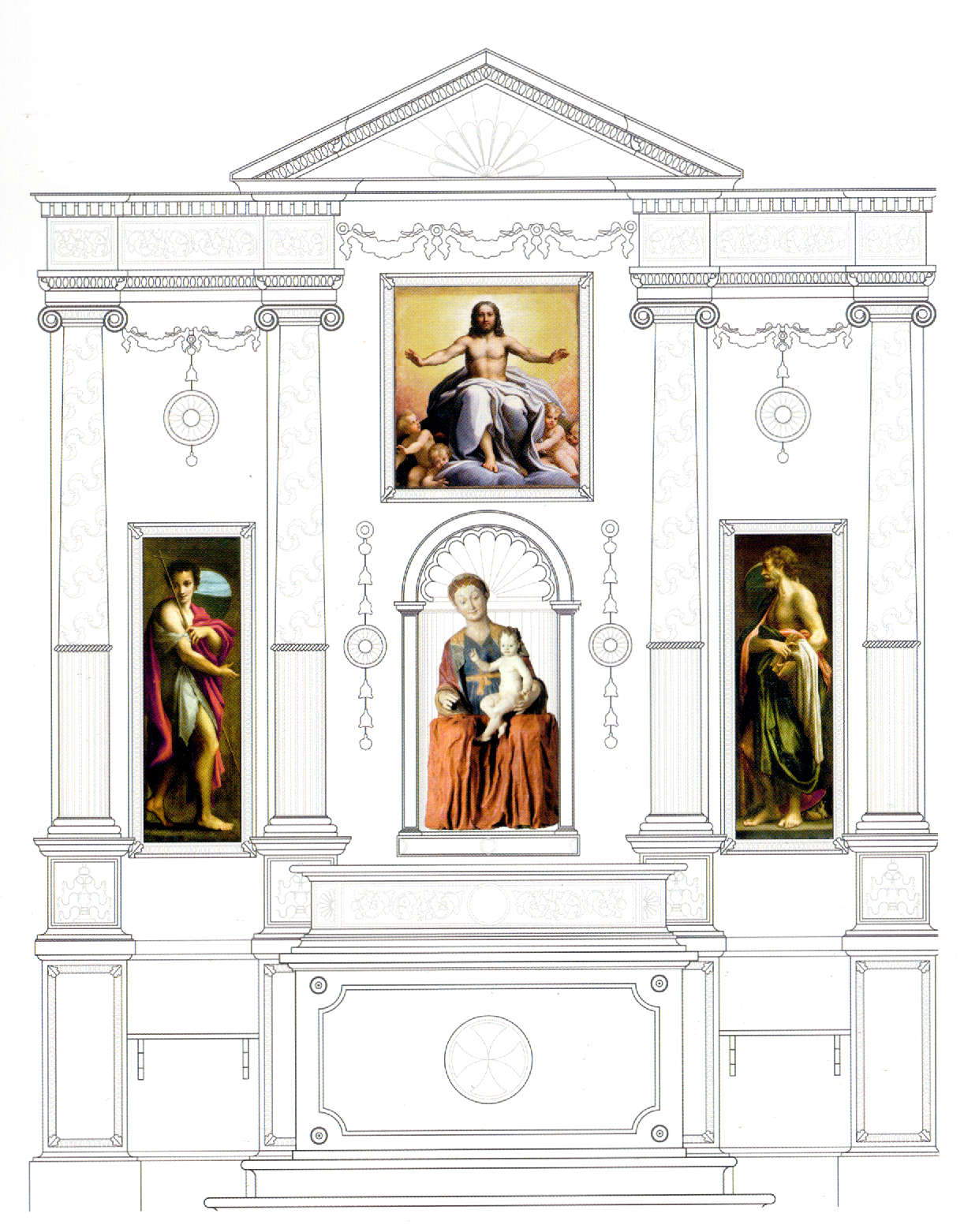
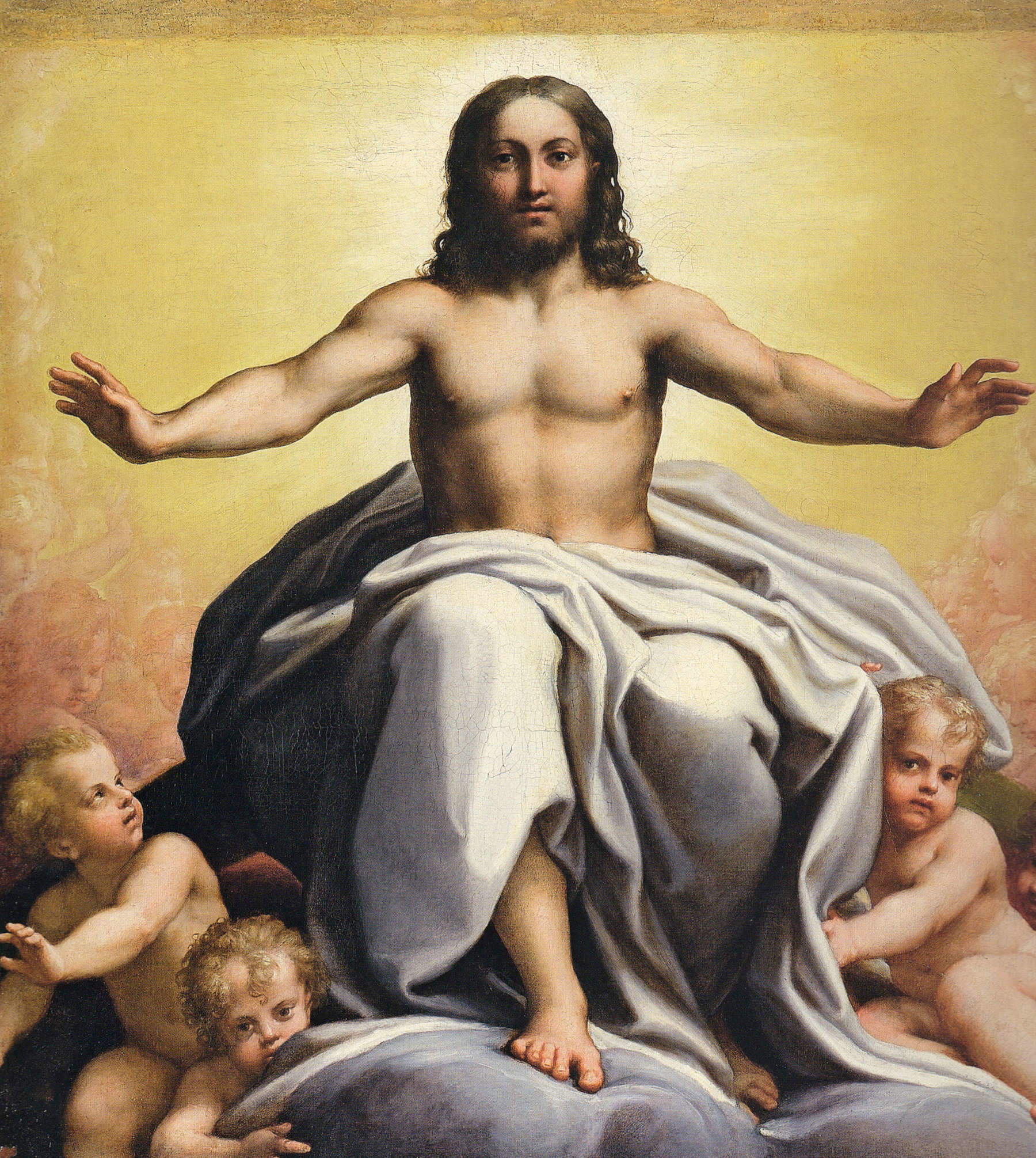
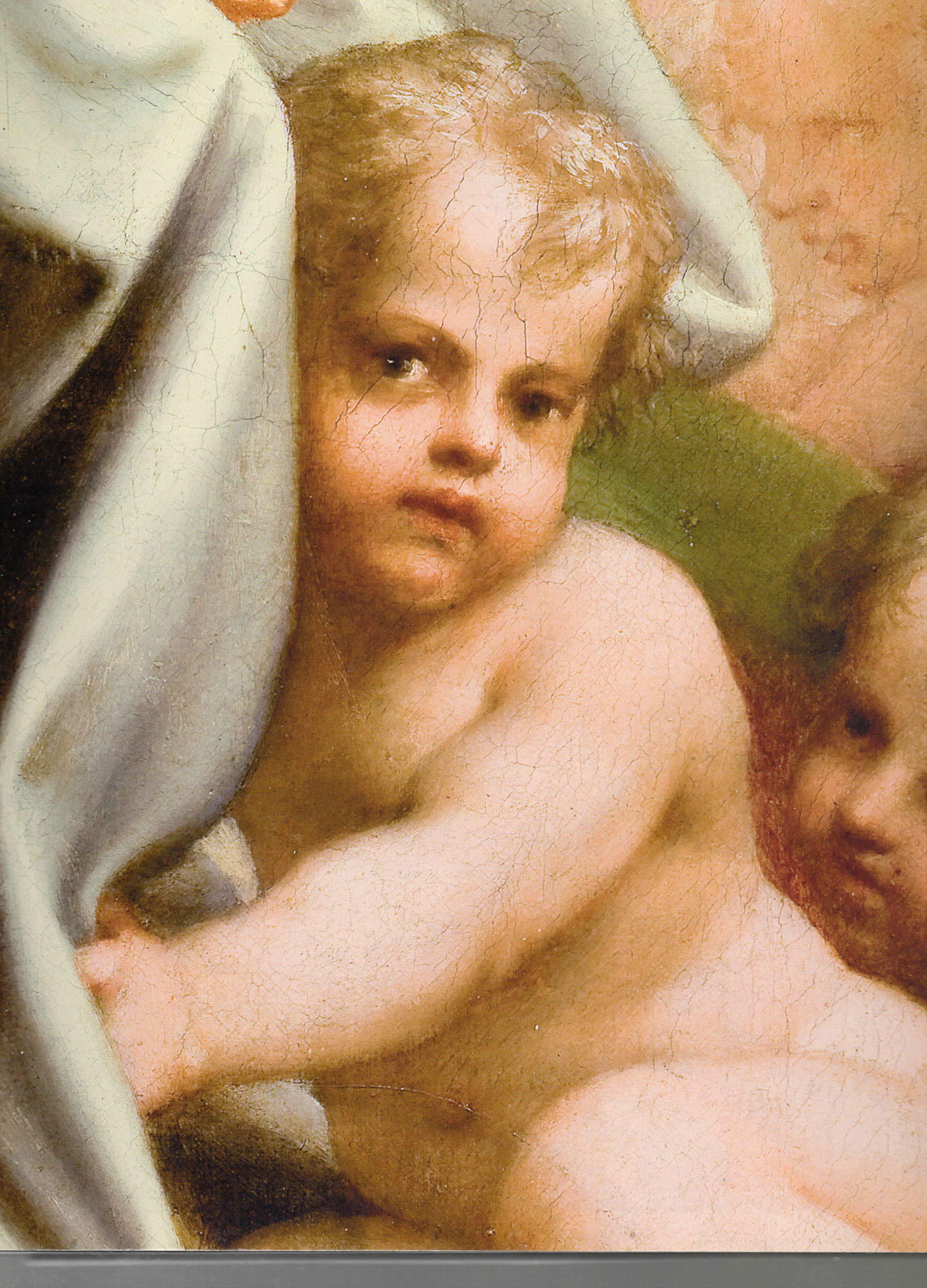
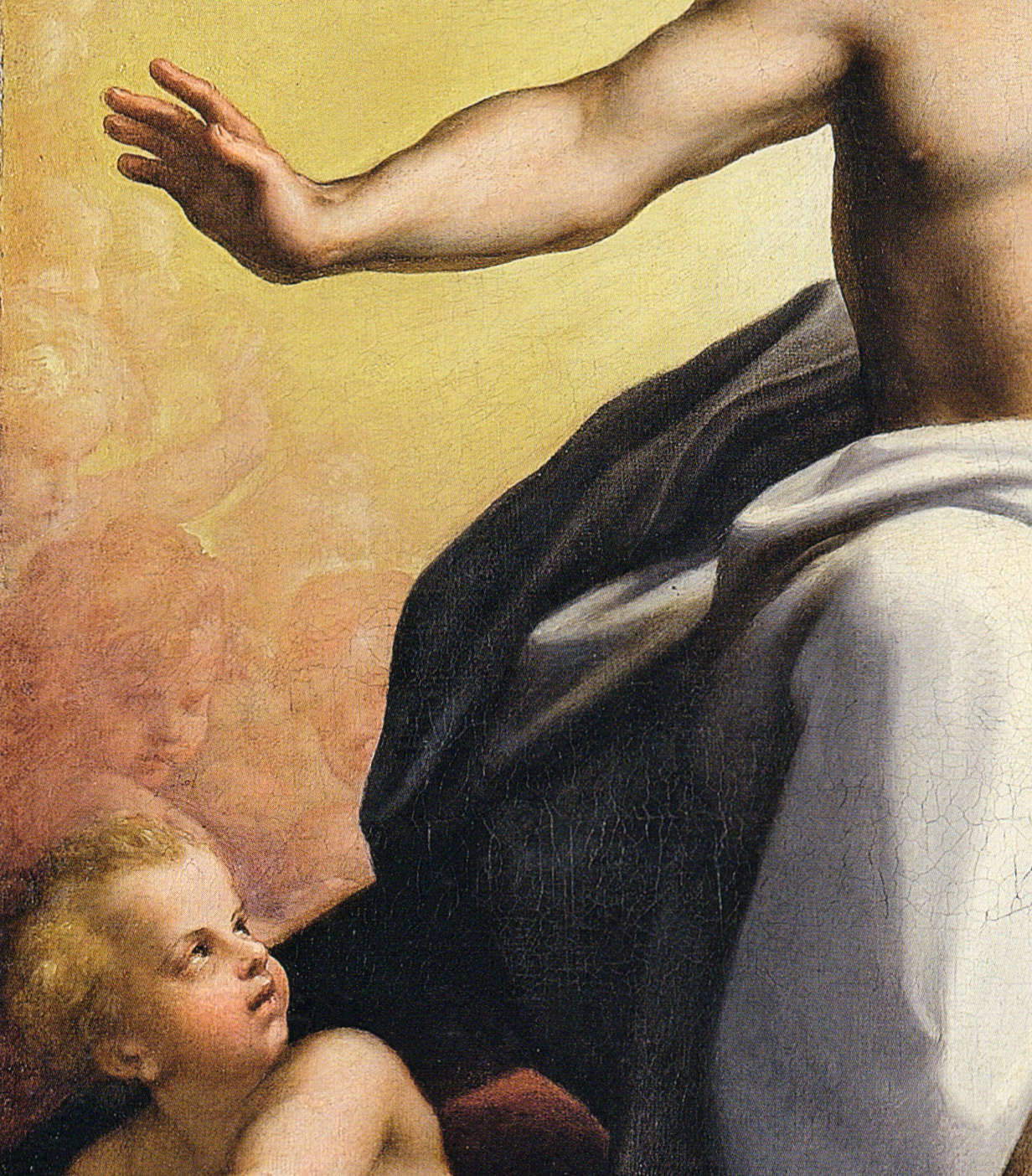
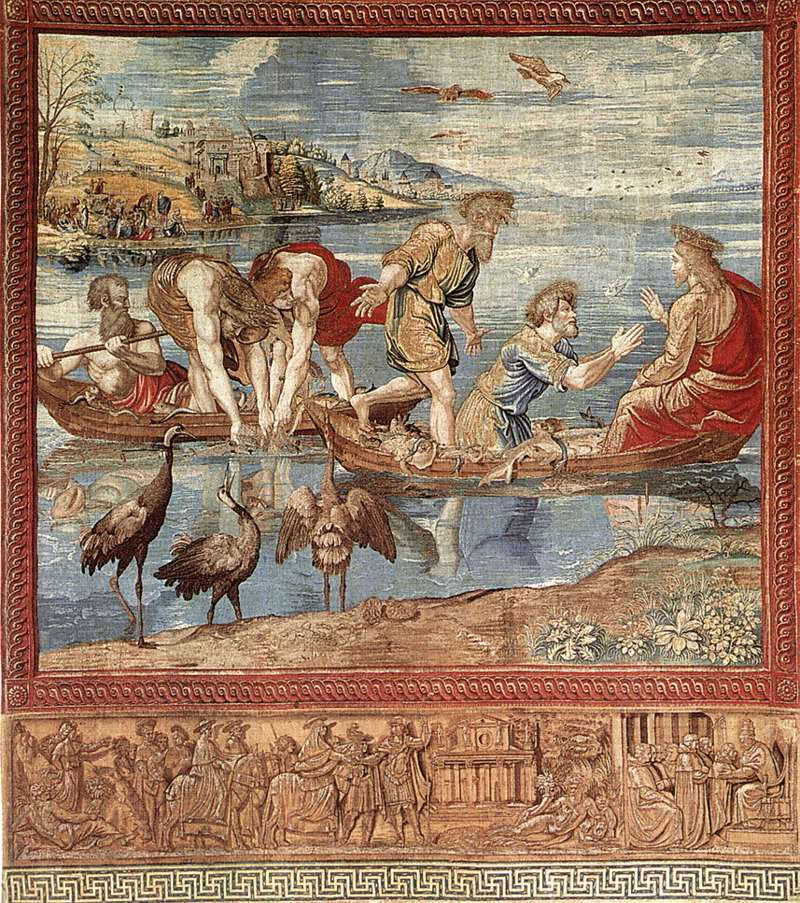
The stupendous and magnificent retablo is the first in the series of ten scenes commissioned from Raphael by Pope Leo X de’ Medici as early as 1514 (a year after his election) for which the Urbino executed the fundamental cartoons to scale to life, engaging in them ingeniously for two years. The subjects range from the last episodes of the Life of Jesus after the Resurrection to some of the Acts of the Apostles and the early Martyrs, thus completing the grand theological design of the entire Sistine Chapel, where - on special occasions - the tapestries, which open to the History of the Church, can still be displayed in place of the painted drapery. In fact, at the time of the papal commission, the entire artistic reception in Rome was imbued with the heroic rumblings of Michelangelo’s vault where divine acts and biblical genealogical links were not simply illustrated by way of narrative-as in the Perugian proposals on the walls-but expanded in the energetic power of heavenly power, in the cosmic, creative and imperative will of the Eternal Father. Raphael felt he had to respond to such intensity, and Alessandra Rodolfo points out how he turned away from the continuity of effort in the frescoes of the Stanze and concentrated on the cartoons requested by the pope. Leo X had been elected by being merely a deacon and had no authentically forged training on the “magnalia Dei,” so Sanzio must have sought appropriate assistance that enabled him to capture the profound meanings of the handing over of sacramental powers by the Risen Jesus to the apostles, who were still young disciples, and consequently bring out the intimate heroic transfiguration of these early Priests. This quest is also part of Sanzio’s excellent culture.
Michelangelo’s innic vault declined the Beginning, the Creation, the Sin, the first Covenant. The scenes of the Florentine team on the walls carried the Liberation of the Chosen People, the coming of the Redeemer, the new and eternal Covenant. And now the series of Tapestries gave the thrust of the life of the Church after the reopening of the Garden and the offering of the universal Forgiveness to all accessible. Raphael’s intelligence thus willed the composition of the scenes, referable mainly to St. Peter and St. Paul, as a powerful counterpoint to the biblical and Christological epos. Their position, very close to the visitors, and above all their admirable quality, caused astonishment to all those who, soon after Christmas 1517 were able to admire the first arrivals in the Chapel.
The cartoons had been sent to Brussels for execution in cloth at the famous master Pieter van Aelst, who committed his entire workshop to them. To explain the execution technique is a very complex thing: let us say that the tapestry is a strong fabric, with crosses and knots, which is formed by colored threads of silk, wool and gold, which make up the vast scene painted in the delivered cartoon. Indeed, the execution takes place in front of the color cardboard, which is always very close; a large tapestry can take more than a year of work by skilled men and women. The fabrics were then lined and served as sumptuous furnishings hung along the walls in halls and rooms, but quite detached from the walls.
The figurative subject of the Miraculous Fishery is paradigmatic in several ways: first, Jesus sits himself in Peter’s boat-theological allusion to Christ’s everlasting presence in the life of the Church-and also shows Peter’s two gestures: disillusionment due to his own work and then obedience to Jesus “at your word” that produces the miraculous catch of one hundred and fifty-three large fish. We note that the prodigious harvest fully involves the second boat, which is that of Peter’s companions, who mystically represent the Priests, in solidarity with Peter, who-as will always happen in the ordinary life of the Church-are the ones who obtain the results of divine Grace. Here Raphael has given us a powerful and rich scene. A dynamic scene, where the great rotulus of the apostolic presence extends throughout the entire vision and ends in Christ. It is extraordinary to admire the silvery-blue reflections of an execution directly prompted by Raphael’s cartoon, and to find there the golden flickers in the waters A more analytical reading, which we are afforded by this exposure in full light and at the right height wants to see from the extreme lower edge the “mother earth,” the fruitful creation that God the Father delivered to the progenitors with the order to govern it.
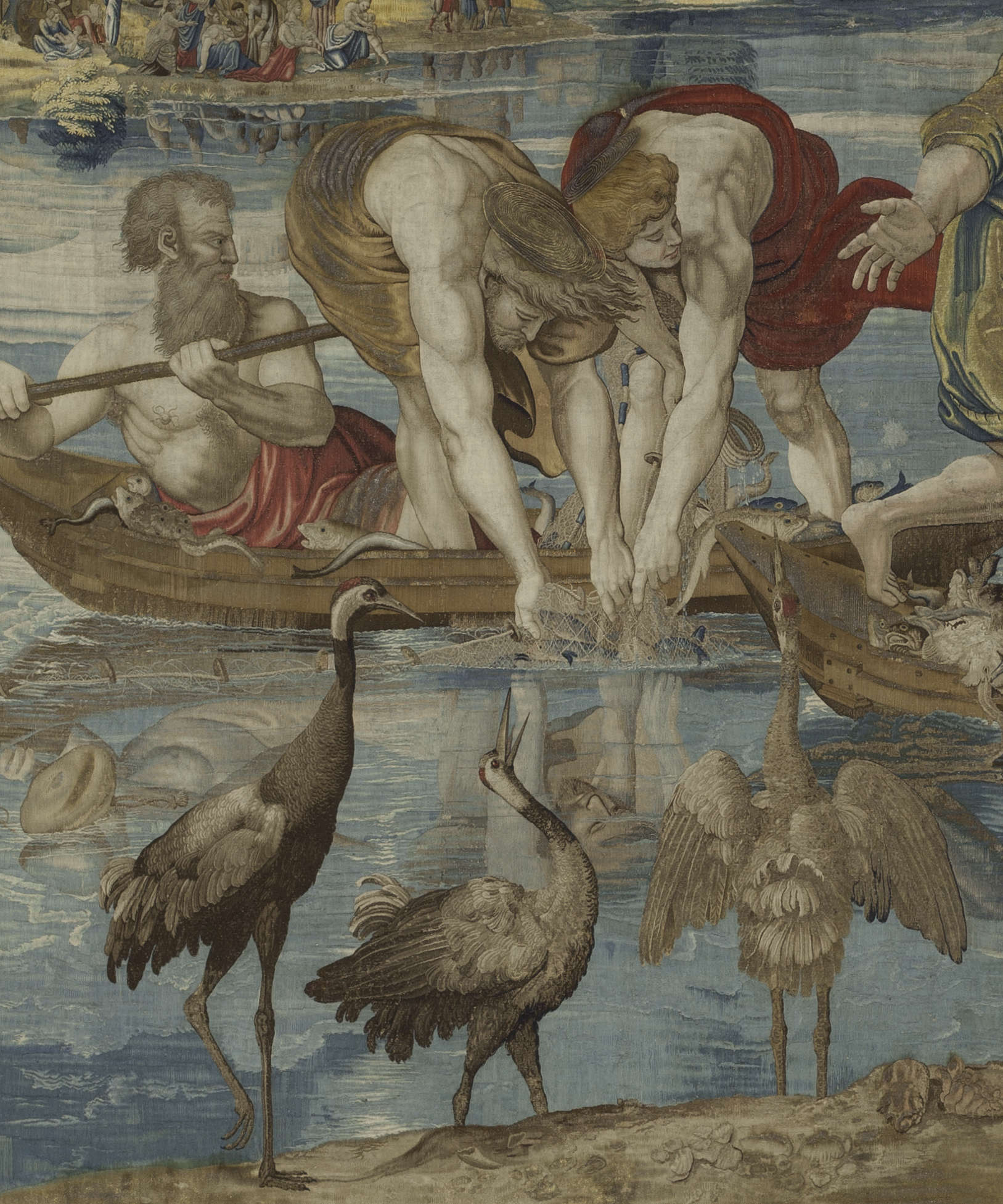
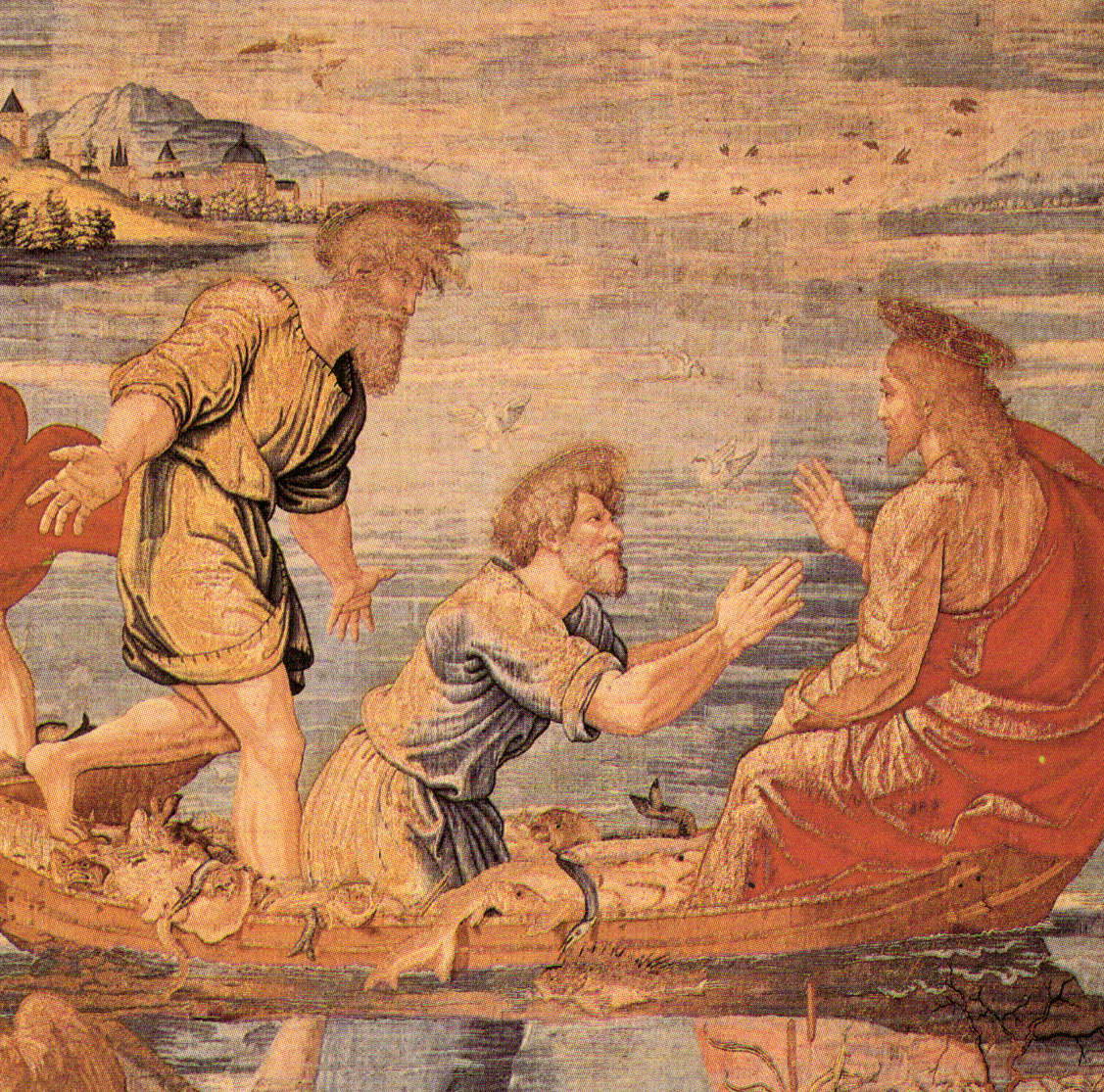

Thanks are due to the Management of the Vatican Museums, the scholars cited here, and the Museums Press Office (Dr. Biller).
Warning: the translation into English of the original Italian article was created using automatic tools. We undertake to review all articles, but we do not guarantee the total absence of inaccuracies in the translation due to the program. You can find the original by clicking on the ITA button. If you find any mistake,please contact us.